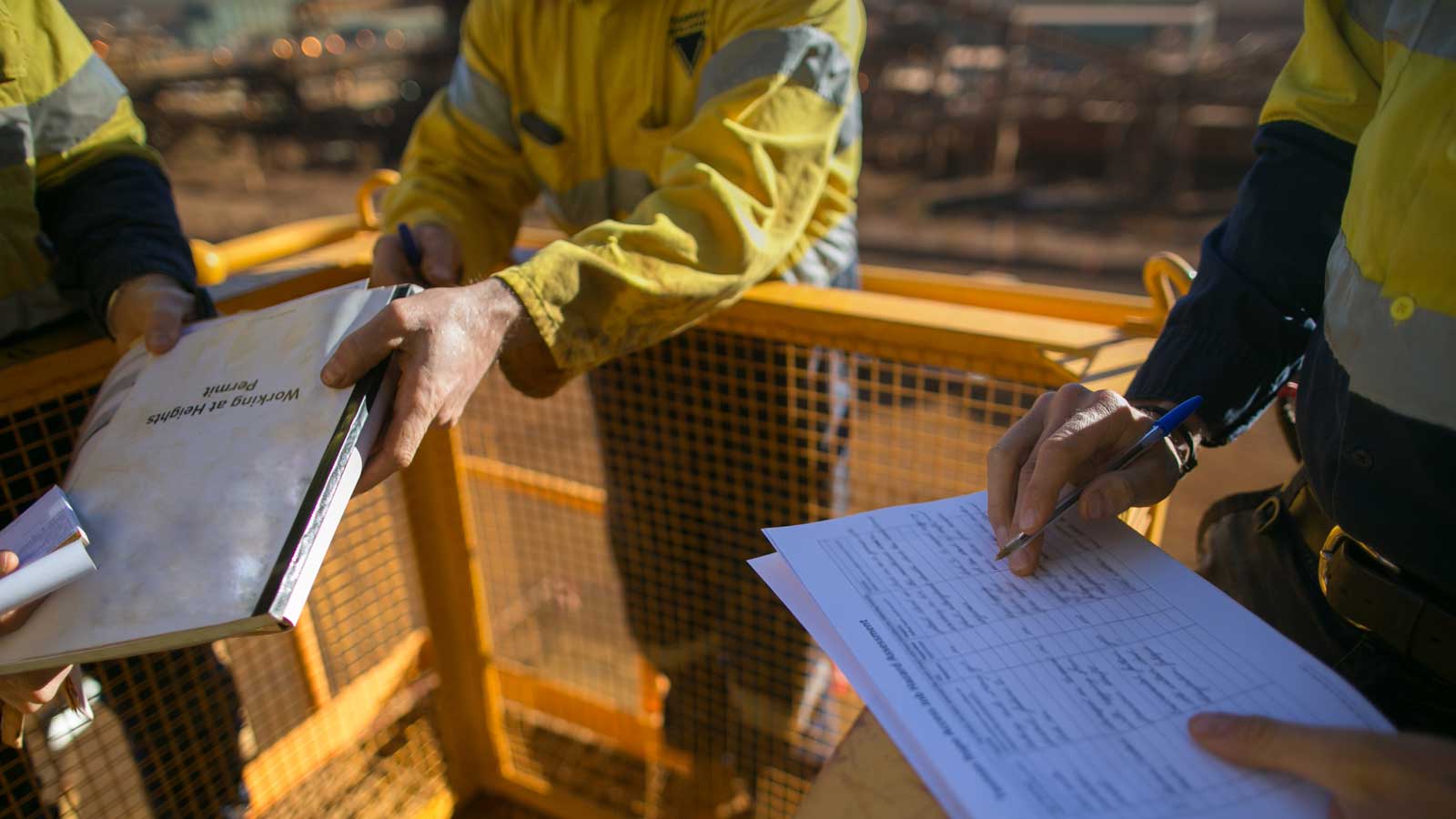- If the best thing you can say about your safety program is that it meets all the legal standards, you’re settling for the bare minimum.
- In an episode of the No Accident podcast, vice president and head of environmental health and safety at Ericsson North America, Barton McMillin, explains why compliance is a first step, not an end goal.
- Collecting and analyzing incident data can help you prevent similar accidents in the future. Encouraging the workforce to actively engage with safety processes and discussions makes safety as second nature as any other aspect of work.
All companies with a strong safety program have leaders who genuinely care about employees’ well-being. This manifests in safety processes that go beyond the requirements set by the Occupational Safety and Health Administration (OSHA).
You absolutely have to check those OSHA boxes, explains Barton McMillin, vice president and head of environmental health and safety at Ericsson North America. But, he adds, it’s the steps you take next that can make the difference in preventing future accidents.
Based on an episode of the No Accident podcast, here’s why safety professionals should treat OSHA standards as a foundation, not an end goal. Barton also explains how to encourage employees to engage with safety processes and the one factor that he believes the safety industry consistently overlooks as a major cause of accidents.
Checking Boxes Is the Minimum Requirement
When a safety professional describes their job to someone outside the field, they often encounter a response along the lines of, Oh, you mean OSHA?
It’s not a completely inaccurate assumption. But ensuring that an organization complies with OSHA standards should be only the starting point for a safety team.
For Barton, the true purpose of a safety program is to keep people safe. It’s possible for organizations to meet all of OSHA’s requirements and still have accidents. That isn’t acceptable to Barton.
Once you’ve made sure your organization is OSHA-compliant, add proactive steps that predict and prevent injuries.
For example, many organizations focus on incident rates as the most important health and safety metric. But this data is reactive. Taken at face value, it doesn’t help you avoid a similar accident in the future.
Adding metrics can record more detail. For example:
- What equipment was involved? When was it last certified?
- What time of day was it?
- Where did the accident occur?
- How experienced was the employee?
- Who else was around?
- What else was happening on the worksite and in the immediate area?
Moving beyond simply recording the accident, instead of looking at it in detail, can help you spot patterns and prevent repeat occurrences.
How to Encourage Workers to Engage With Safety
One way to encourage a proactive safety environment is through teaching people at every level to actively think about the ways they keep themselves and others safe.
Barton says that one way he knows a safety program has grown from checking boxes into a true safety culture is when people throughout the organization are earnestly discussing safety processes.
He has a simple but effective method for getting those conversations started:
- Look at how many people you have in your organization, then subtract the number of people in your leadership team.
- Divide the remaining number by the number of leaders.
- Every month, each leader is assigned a manageable number of employees to talk to one-on-one about safety.
Don’t think of it as a long, drawn-out discussion; it can be as quick as five minutes. What matters is that it’s sincere.
That’s why Barton doesn’t give the leadership team scripts — employees can see right through that, and it can feel like an interrogation. Instead, he recommends that however, the leader chooses to begin the conversation, they make sure to cover two questions:
- What is your primary workplace safety concern?
- How can the other leaders and I help with that?
These conversations have multiple benefits. They encourage employees to actively consider their own and others’ safety and to feel comfortable raising issues with leaders.
They can also open up a more general dialogue. For example, the employee might have been looking for an opportunity to suggest a business idea, or perhaps they’re struggling with something in their personal life.
When you stop treating safety as separate from other everyday work discussions and treat it like any other workplace topic, it permeates beyond safety meetings and into the culture.
Don’t Underestimate the Impact of Mental Well-Being
Barton believes many safety professionals — and the industry as a whole — tend to overlook mental health as a factor in workplace accidents.
If a worker is distracted by something going on at home, or they’re feeling fatigued or out of sorts, it can affect their concentration, which leads to accidents.
Mental health often isn’t recorded in incident reports, partly because safety professionals don’t think to ask, and partly because workers are often reluctant to discuss personal issues.
Based on his own observations, Barton estimates that mental health could play a role in as many as 90% of injuries and incidents. It’s one reason he believes that safety programs should extend beyond the workplace.
Organizations are legally required to protect employees when they’re at work. But it’s in the best interest of the business and the workers to keep safety in mind all the time.
Workers who understand that the safety processes they learn at work are about protecting them, not lecturing them, feel supported. If they believe that the leaders at their organization genuinely care about their well-being, they’re more likely to share personal issues before they escalate and potentially lead to an accident.
Safety can often look like bureaucracy, but when you do it right, you realize it’s really about people.
This article is based on an episode of the No Accident podcast.

